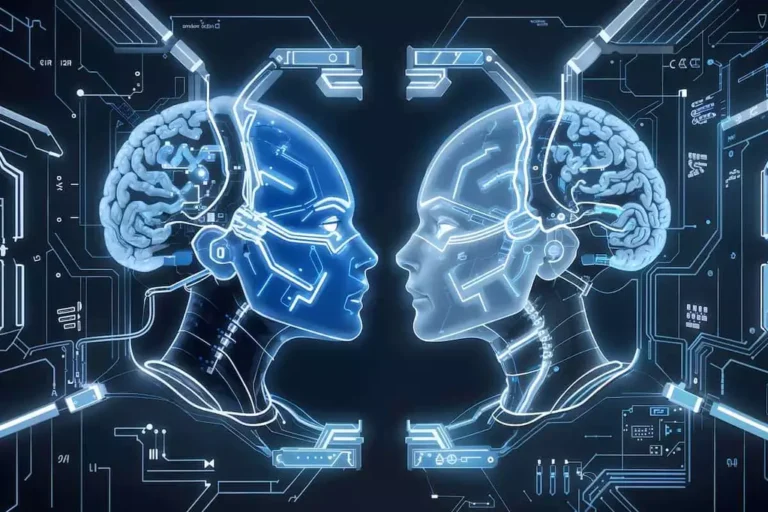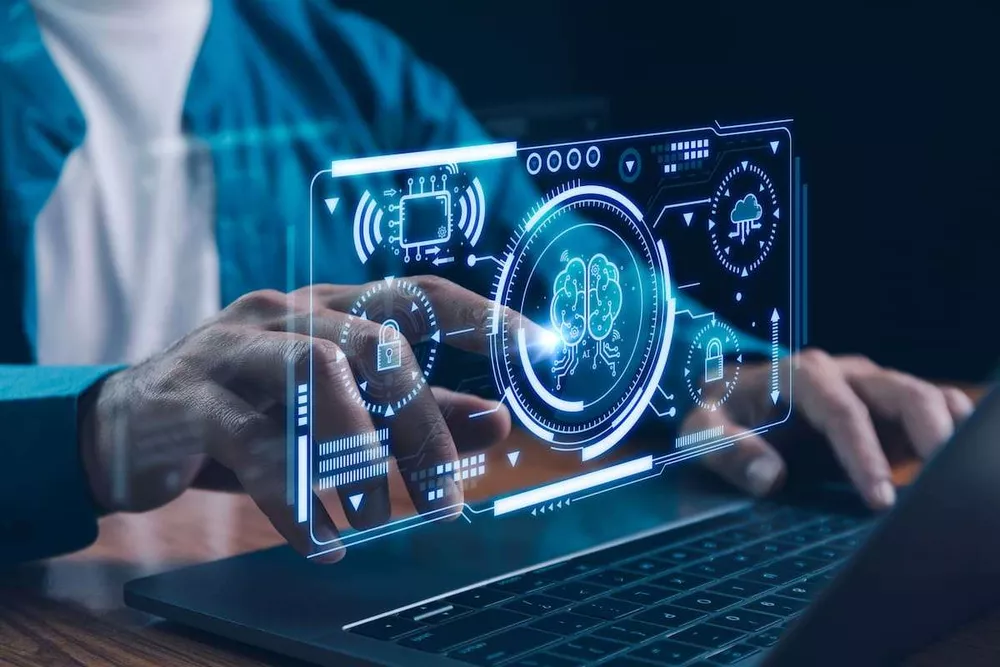Generative AI vs Predictive AI: What are the Distinctions and Applications

The AI universe has been booming lately. On the one hand, genAI comes up with brand-new things, from texts and sounds to pics and even code. On the other hand, predictive AI looks ahead — it applies data to indicate what might happen next. Machine learning (ML) is the secret behind both these approaches. While they share this starting point, generative AI vs predictive AI have distinct goals and use cases. In the article, let’s dive into the key distinctions between these two AI fields.
What is Generative AI?
Generative AI is a hot topic in the world of tech. These systems are essentially digital artists — they use DL to craft new material, pics, videos, and more. They’re drilled on massive datasets which allows them to generate everything from short poems to full-fledged articles.
Accessing generative AI is easier than ever for numerous businesses. Major tech companies jump on board and offer their versions. Take, as an example, Google’s Gemini, Microsoft’s investment in OpenAI, or even Github’s Copilot. You can be part of this story, too. GlobalCloudTeam can help you get your top AI product rolling.
But how does it work? It scans raw information, anything from a simple tip to an entire Wikipedia page. ML learns to predict the most likely continuation with the help of the data. Still, it’s important to remember that gen AI doesn’t give rise to something entirely new. They lack a spark of creativity.
Nevertheless, the tech delivers fresh and visually appealing results inspired by its training data. It isn’t about simple copying. It’s about building on existing knowledge to create something new. You put the data which comes in any form, text, image, video, even a whole webpage — anything the system can process. After analyzing these patterns with internal algorithms, it creates new text in response to a prompt. To sum up, it’s a useful tool for producing images, creating information, and expressing one’s creativity.

We are confident that we have what it takes to help you get your platform from the idea throughout design and development phases, all the way to successful deployment in a production environment!
Applications of Gen AI
The next generation’s artificial intelligence holds significant potential for various business applications. Integrating an advanced AI into your intelligent automation strategy enables you to enhance and tailor automated procedures. Let’s touch on some examples of how it can be used in business contexts:
- Banking and Finance: Generative tools offer a groundbreaking approach to credit risk assessment. You may generate realistic, synthetic data to test credit risk models robustly. The best part — it’s all without compromising sensitive customer information. It empowers financial institutions to make more informed decisions.
- Healthcare: Electronic health records are a rich patient data repository. Still, manual analysis is time-consuming and inaccurate. Gen AI tools speed up the procedure; they rapidly analyze vast datasets within EHRs. Moreover, they facilitate the identification of potential anomalies. Doctors benefit the most as AI offers earlier confirmation of illness and devises tailored therapy plans.
- Information Technology (IT): Software development experiences a significant paradigm shift with the advent of AI development tools. Gen AI helps to accelerate development cycles, reduce coding errors, and streamline bug-fixing processes. Consequently, you get a boost in software development efficiency.
Moreover, think about client support, too. Here, gen AI enables quicker responses to inquiries through NLP-powered chatbots. Additionally, it extracts essential insights from client interactions. Employees may use this feedback for future improvements.
What is Predictive AI?
Predictive AI takes center stage when making predictions. It leverages ML algorithms — regression, classification, and time series analysis to sift through mountains of data. Such models may forecast everything. You might ask them to reveal stock market movements or even foresee user behavior and disease progression. How do they do it? They simply uncover patterns and connections from past events.
However, the perks go beyond. Predictive AI turns data into real-time information. Both large and small ventures benefit from this, as they now optimize operations and develop strategies for success relying on data. When you choose predictive AI, you choose the flexibility to gain a competitive edge and optimize your operations with accurate predictions.

Applications of Predictive AI
Numerous industries can benefit from this type of AI. As an illustration, it helps detect high-risk individuals and prevent illnesses in the healthcare system. The AI identifies patients with comparable features for diagnosis based on patient data and symptoms.
In financial forecasting, predictive AI leverages historical data to forecast future stock market trends, assess risks, and identify investment opportunities. It enhances forecasting accuracy and allows you to make informed financial decisions.
Additionally, predictive AI forecasts future purchases by examining user data, including purchase and cart history, along with behavioral trends. Demand forecasting aids businesses in inventory management and supply chain efficiency.
Key Differences of Generative AI vs Predictive
After we’ve figured out the subtleties of each technology, let’s see how they’re distinguishable. These are the primary areas of generative AI vs predictive AI comparison:
Purpose and goals
GenAI is a powerful content-creation tool. It produces novel outputs, captivating imagery, engaging videos, and even musical compositions and written narratives. Its core objective is to leverage its expressive potential and forge ground-breaking content which reflects human-like patterns.
In contrast, predictive AI adopts a more analytical approach. It meticulously examines historical data and seeks to spot indicators and trends which can be used to forecast future events or trends. It essentially allows predictive AI to act as a forecasting tool which offers valuable insights into what may lie ahead.
Interpretability
Generative AI models might be challenging to decipher. Think of them as black boxes. Of course, they give you extraordinary results, but you never know the underlying thought processes that led to them. The formula “no transparency — no trust” proves true very often. Stakeholders are often eager to understand the rationale behind AI creations, so when they don’t get an explanation, they lose trust.
Predictive AI models, on the other hand, offer a more transparent path. These models represent the relationships they identify between data points and their resulting predictions. Such a level of interpretability empowers users to comprehend the key factors influencing the AI’s forecasts. You know you can trust its ability to deliver reliable outcomes.
Training data and model architectures
Gen AI ingests vast training information and diverse media formats like pics, videos, tunes, and written material. It analyzes these examples and then delivers distinctive results. Neural networks and generative adversarial network (GAN) are the two helping tools which fuel AI.
Predictive AI takes a more data-driven stance. To guarantee the best results, it merges the strength of statistical algorithms and ML models to scan historical data. In this way, it becomes easy to discover the main patterns and connections. So, genAI shows mastery through creative examples. Simultaneously, historical data pertaining to the occurrence or consequence that predictive AI aims to forecast is required.
Final Words
AI is developing so quickly that soon, we may forget there once were separate types of AI generative vs predictive. We expect systems that flawlessly combine these technologies. Now, businesses don’t have to choose between the two — they get the best of both worlds.
Sophisticated AI systems mix the two and produce both types of outcomes. Merging two algorithms — those determining trends and those creating new works, AI is gaining even more attention. Therefore, if you want to help your company reach a new level, contact the AI experts at GlobalCloudTeam. Here, you’ll be met by professionals who will know exactly which is the best option — generative AI vs predictive AI, or joint — that suits you. Contact us and get a chance to build a future where you keep pace with leading companies.
Top Articles
ABC of DevOps Testing: Types, Best Practices, and Everything You Need to Know
I am here to help you!
Explore the possibility to hire a dedicated R&D team that helps your company to scale product development.






